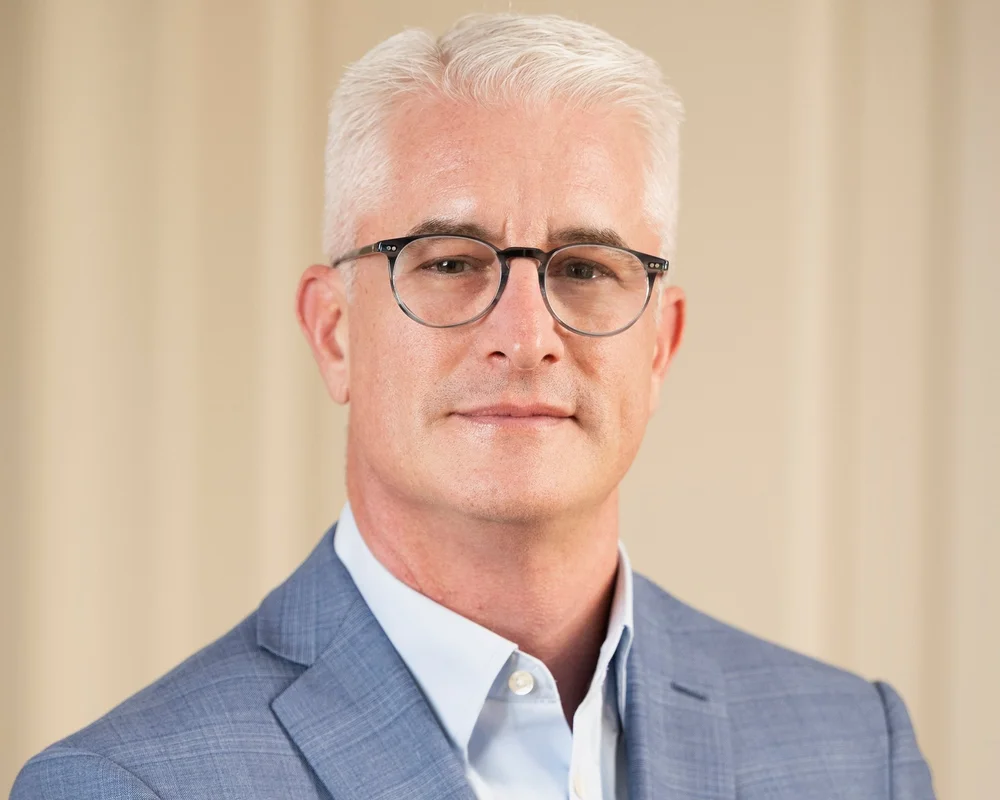 The middle mile and metro fiber sector has been an organic story over the past few years after all the M&A in the prior decade. Bluebird Fiber is one of the regional operators that emerged from that era, and backed by Macquarie they have been quietly investing in fiber and data center assets across a footprint centered on Missouri, Illinois, and Iowa. With us today to talk about their approach is Jason Adkins, who was named CEO of Bluebird Fiber in March of 2024. He moved over from UPN, where he was CEO up until the Cox Communications transaction.
The middle mile and metro fiber sector has been an organic story over the past few years after all the M&A in the prior decade. Bluebird Fiber is one of the regional operators that emerged from that era, and backed by Macquarie they have been quietly investing in fiber and data center assets across a footprint centered on Missouri, Illinois, and Iowa. With us today to talk about their approach is Jason Adkins, who was named CEO of Bluebird Fiber in March of 2024. He moved over from UPN, where he was CEO up until the Cox Communications transaction.
TR: What drew you to Bluebird? What opportunity did you see?
JA: Bluebird is a great 25-year-old company with a great network, really good people, and a really good reputation in the industry. It certainly helped that it was in Kansas City where I live. I was looking forward to getting into the right situation to kind of do it all over again, and in Macquarie I felt that Bluebird also had the right kind of financial backers. And it’s been a lot of fun coming over here to work with fresh eyes and new ideas, and to take what was already a really good company and continuing to grow it.
TR: How different have you found Bluebird from your prior experiences?
JA: They are similar companies — both operate business fiber networks in the Midwest. We over here at Bluebird have a lot more middle mile infrastructure in addition to the heavy metro assets in St. Louis, Kansas City, Peoria, Springfield and others. But it’s the same good Midwestern DNA of taking care of the customer with a focus on businesses, government, and enterprise, with no residential or other distractions.
TR: What does Bluebird’s Infrastructure look like today?
JA: On the western side, we serve the Kansas City metro and the outskirts on the Kansas side. Then we have a really nice dense fiber network that runs all the way from Springfield and Joplin down in southern Missouri all the way up through Kansas City, Columbia, Jefferson City. It connects the really rural areas of northern Missouri and then over into Illinois up into the outskirts of the Chicagoland area as well as Rockford, and Peoria. It also touches eastern Iowa around Davenport. We have a couple of really nice data centers, including a really unique one that’s underground in Springfield and another up in Quad Cities. Those are great for both fiber customers and non-fiber customers. But the vast majority of our revenue is derived from the network.
TR: What have you been putting your resources toward, and what’s on the drawing board for 2025?
JA: Our data centers are well-built and almost overbuilt. We’ve got a lot of floor space and power left there, and therefore we can handle a lot more customers in those organically right now. So luckily we don’t have to do a lot of work to those. For our fiber network, we have roughly 80,000 near-net buildings, meaning they’re within a quarter mile of our networks. We want to penetrate those and get into as many as we can. And we’re looking for anchor tenants to continue to stretch our network out to new areas. We are really focused on putting people on our fiber. We will do type 2 when necessary, but the vast majority of what we do is going to be connecting folks to our fiber.
TR: Are there places you’d like to be in, or is it strictly opportunistic where the anchor customers are?
JA: I think it’s mostly opportunistic. We don’t have plans necessarily to go build out a new metro area, like Denver or somewhere like that. But we also are open to such a project. If it’s adjacent to us and it’s an underserved market, we would love to put more fiber in the ground. We have a really good financial backer in Macquarie, and we have a really good multi-bank group for our debt facility, so we certainly have money to spend for the right projects.
TR: Plenty of money has been spent on FTTH opportunities in the last few years, how does that fit into Bluebird’s plans?
JA: We don’t see ourselves playing in fiber-to-the-home other than that we support a lot of FTTH providers. All the big names that you think of in FTTH are customers of ours, buying metro and middle-mile transport and fiber from us. But even though it’s all fiber, the FTTH business truly has different operational challenges. So we’ll let the really smart FTTH folks focus on that piece, and we’re happy to sell them really good transport to wherever they want to go.
TR: What types of anchor customers are you seeing out there that could get you into new markets?
JA: We see a lot of FTTH folks trying to get into smaller and smaller communities. We see a lot of AI and hyperscaler business activity. Wireless has slowed down a little, although there’s still a lot of towers being built so we still see our fair share of that. We also see e-Rate opportunities, with schools needing fiber. Overall, we’re seeing really good growth on all sides of our business: enterprise, carrier, schools, government, etc.
It’s kind of a cyclical thing. Years ago, nobody thought e-rate was good business. Then it became the best business ever. Then people thought Enterprise was the best business. Now everybody thinks FTTH is the best. That’s why we just focus on building a really good fiber network, because fiber always wins. And that’s the honest truth. And as long as we own the underlying fiber assets and are putting our CapEx towards that, we’re going to be very successful.
TR: There’s been lots of federal grant activity in the past few years, how do you view those opportunities?
JA: If you go back far enough, Bluebird took some original BTOP money to build St. Louis to Kansas City. So we as a company are very familiar with that. But I don’t see us continuing to play directly in BEAD or middle mile, although we’ll always look at options. What we’re seeing instead is a lot of demand from our customers, e.g. the FTTH folks, who are going after BEAD funds and even local governments finishing up some COVID-era relief funds and things like that. So I think from that perspective, it is driving business for us even though we’re not directly for it.
TR: What other initiatives are you working on?
JA: We launched voice services a month or two ago, which sounds kind of crazy because it’s not really a new product. But when I joined Bluebird, we didn’t have a voice product. And while we keep a very simple product set — dark fiber, waves, ethernet, internet, all business related — there is a large segment of customers that needs voice. They need SIP, dial tone, and POTS lines.
TR: How has adding voice changed your infrastructure?
JA: Voice is a really old technology, but now you’re delivering it all over IP and to the network, it looks just like another over-the-top service. Our folks have been having to get used to installing session border controllers versus other things. But it’s not as big a leap as it used to be when you had to buy a 5ESS Switch and a bunch of other things. It has been pretty easy, all things considered.
TR: Will you be adding UC or other more advanced capabilities?
JA: We absolutely have on the roadmap to look at some hosted UC and other things down the road. But we’re starting small and giving folks what they want.
TR: Are there other managed services on the roadmap?
JA: We currently have a Cloud Connect product that we work with Megaport on. We do a little bit of Manager Router, and we’re looking SD-WAN. Whatever products we come out with will be adjacent and connectivity-focused. I think we operate under the Keep It Simple, Stupid principle: just a handful of really, really good products and really good customer service.
TR: How do you view the M&A marketplace right now?
JA: We’re mostly focused on organic growth. When inorganic things pop up, we look at them. But right now we are just focused on getting going with what we’ve got. In general, I think people pay for quality now. I think that’s been the big change as interest rates have risen over the last few years, and money isn’t necessarily free. I think that has benefited good operators, because everybody in the market is pretty rational from a pricing perspective now. Good operators can generally make good margins with customers. Because we’re focused on building Bluebird very efficiently with really good quality systems, that gives us a lot of options in the future.
We do hear a lot of chatter about things going on with fiber-to-the-home folks. I think 2025 will be a big year of consolidation over there. It also sounds like there may be some consolidation even on the enterprise business side of things. I said on my panel at Incompas that I don’t think we’re too far away from some of these bigger fiber-to-the-home companies buying folks that look like Bluebird. FTTH companies, for the most part, haven’t really penetrated the enterprise. But they could buy it, which would give them more area to go build fiber-to-the-home as well as the built-in knowledge of how to go sell enterprise on what they already have. I think it’s just a matter of time and the fiber-to-the-home gold rush has to slow down a little bit first. But then the question will be where they go next, and I think that’s when you start to see it.
TR: Thank you for talking with Telecom Ramblings!
If you haven't already, please take our Reader Survey! Just 3 questions to help us better understand who is reading Telecom Ramblings so we can serve you better!
Categories: Datacenter · Fiber Networks · Industry Spotlight






Discuss this Post